|
|
Peugeot 5008
|
 |
|
|
Debut: 2010
Maker: Peugeot
Predecessor:
No
|
|
|
|
| Published
on 24
May
2014 |
All rights reserved.
|
|
|
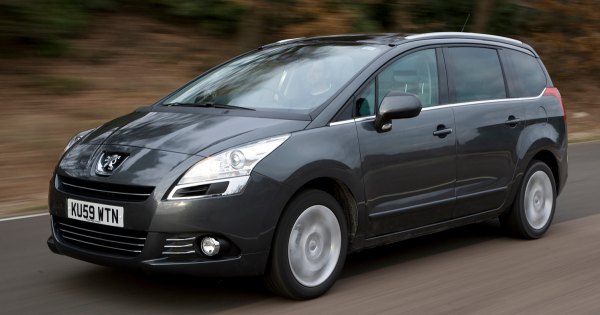
|
French car makers are good
at making compact MPVs. Renault invented this segment with Scenic in
1996. Citroen added further steam with its Picasso series since 2000.
Peugeot joined the segment rather late – perhaps because of the success
of its sister brand it found little urgency to expand into the segment.
However, benefited by the knowledge of Citroen, its first attempts
wasted no time on mistakes. The 3008 launched 5 years ago surprised us
with its upmarket interior, superb refinement and fluent handling. Just
a year later, the larger 5008 did the same to the 7-seater segment. It
had to be rated as the best 7-seat compact MPV together with Ford Grand
C-Max.
The 5008 is derived from the platform of 3008 and the last generation C4
Picasso. It does not have the lightweight engineering of the new
EMP2 platform that underpins the current C4 Picasso, so it is quite
heavy, carrying 130 to 160 kg more than the new Citroen with equivalent
engines. This explains why even the fastest model takes 9 seconds to go
from 0-60 mph, half a second slower than Citroen. However, buyers in
the segment are less sensitive to performance. Instead, packaging is
the most important, and the Peugeot is strong in this aspect.
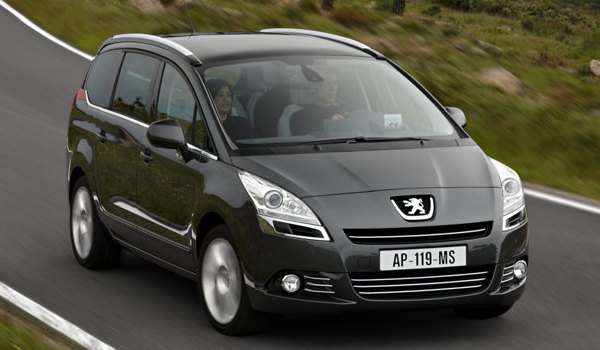
|
Externally, the 5008 has about the right size. It is 4530 mm
in length and 2728 mm in wheelbase, offering enough cabin space without
hampering agility. Meanwhile, its 1837 mm wide body allows the interior
to fit 3 proper seats in the second row, something many rivals failed
to do.
Back in 2010, its exterior styling represented a new era introduced by
design boss Gilles Vidal. It abandoned the pronounced nose and big
laughing mouth of the previous styling theme (see 207 and 308 Mk1)
for a crisper, neater and more elegant design language. It uses chrome
elements smartly to lift the perception of quality. The large glass
area (including panoramic roof) and hidden D-pillars lighten its visual
bulk. The neatly recessed L-shape taillights smarten the rear end
design. In short, it appears quite tasteful and upmarket. In fact, the
original design is so good that it makes the facelift introduced this
year (see last picture below) a bit overdone. Aerodynamics is also good
for a people carrier, as evident in the 0.29 drag coefficient.
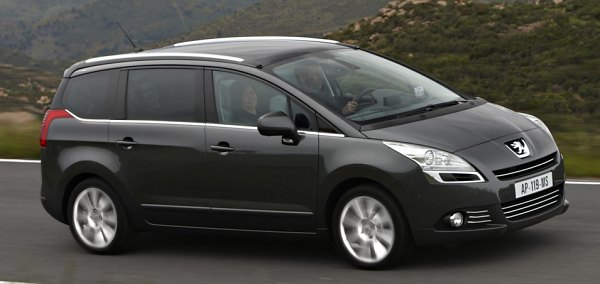
|
Inside, the ambience might be darker and less cheerful than
Citroen, but the dashboard design is quite tasteful. Materials and
build quality are good as long as you don’t compare it with Volkswagen
products. Ergonomics are less so, as the sweeping center console means
some buttons are too far to reach, and tall drivers may find their
knees
obstructed by the wide transmission tunnel. Nevertheless, the driving
position is better than most MPVs. As expected, you sit high to have a
commanding view on the road, but what’s unexpected is the position and
incline angle of the steering wheel, which is just the same as a 308
hatchback, so it feels more natural to keen drivers.
Its accommodation and flexible seats have to be the standard of the
class. As mentioned before, the second row consists of 3 individual
seats in identical size. They can slide, recline or fold flat into the
floor together with the 3rd row, so you can get a completely flat cargo
space without detaching the seats or tumble the seats forward (which
could reduce the length of load bay) like many rivals. Moreover, you
don’t need to detach the headrests first, because they can be lowered
and recess into the backrests. The conversion from people carrier to
cargo carrier could not have been more easily!
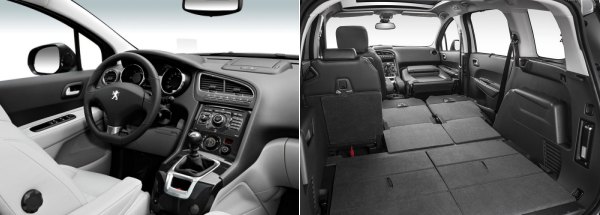
|
Another merit is the easy access to the third row. By
pulling a handle on the outer seats, they not only slide forward but
also has their cushions flip up and backrests tilt forward, freeing up
further space for you to enter the rear seats. Normally, the rear bench
is designed for children, but it is accommodative enough for emergency
use by a couple of average-size adults.
Although PSA is weak on powertrains, you can still find some competent
engines to serve the usual needs. Most buyers opt for the 115 hp 1.6
HDi turbo diesel, which is cheap to buy and run (good for 60 mpg). The
all-aluminum diesel engine also lightens the nose and improves handling
a little. For regular use you will appreciate its good low-end torque,
but it lacks top-end punch for overtaking. The heavier 2.0 HDi with 150
hp is punchier and more satisfying on highway, but it is a bit louder.
Fastest of the bunch is the 1.6 THP direct injection light-pressure
turbo petrol with 156 hp. It is also more eager and more refined to rev
than the diesels. No versions of the 5008 could be described as quick.
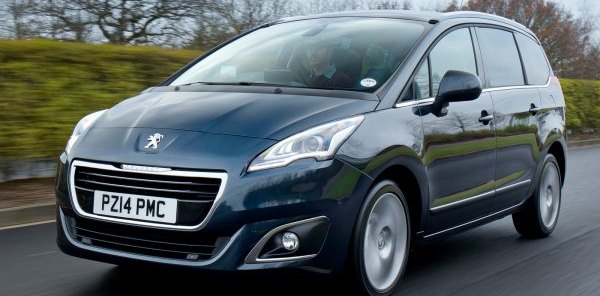
2014
facelift
|
However, its chassis is very well tuned. Even though the
suspension layout of MacPherson struts (sourced from 208) and
torsion-beam axle (from old C4 Picasso) is nothing sophisticated, its
setup mates stiff springs with well-judged damping, resulting in a firm
but compliant ride. It rides nearly as supple as the softly sprung
Citroen and Renault Scenic, yet with more composure and tighter body
control. The 5008 is well balanced and quite agile for an MPV. Its
electrohydraulic steering is accurate, consistently weighted and loaded
with good feel. It tracks straight on highway and feels stable in
high-speed corners. Besides, its cabin is well insulated from engine,
wind and road noises thus it is good for long distance trips. Such an
all-round ability makes it a great choice in the class even though it
is more than 4 years old by now.
|
Verdict:     |
|
|
|
|
|
|
|
|
|
|
5008 1.6THP
|
2010
|
| Front-engined,
FWD |
| Steel monocoque |
| Mainly steel |
| 4529 / 1837 / 1639 mm |
| 2728 mm |
Inline-4
|
| 1598 cc |
DOHC 16 valves, VVT
|
Turbo
|
| DI |
| 156 hp |
177 lbft
|
| 6-speed manual |
F: strut
R: torsion-beam
|
| - |
| 215/50R17 |
1460 kg
|
| 121 mph (c) |
9.0 (c)
|
| - |
|
5008 1.6HDi
|
2010
|
| Front-engined,
FWD |
| Steel monocoque |
| Mainly steel |
| 4529 / 1837 / 1639 mm |
| 2728 mm |
Inline-4, diesel
|
| 1560 cc |
SOHC 8 valves
|
VTG turbo
|
| CDI |
| 115 hp |
199 lbft
|
| 6-speed manual |
F: strut
R: torsion-beam
|
| - |
| 215/50R17 |
1430 kg
|
| 114 mph (c) |
11.6 (c)
|
| - |
|
5008 2.0HDi
|
2010
|
| Front-engined,
FWD |
| Steel monocoque |
| Mainly steel |
| 4529 / 1837 / 1639 mm |
| 2728 mm |
Inline-4, diesel
|
| 1997 cc |
DOHC 16 valves
|
VTG turbo
|
| CDI |
| 150 hp |
251 lbft
|
| 6-speed manual |
F: strut
R: torsion-beam
|
| - |
| 215/50R17 |
1540 kg
|
| 121 mph (c) |
9.3 (c)
|
| - |
|
|
|
|
|
Performance
tested by: -
|
|
|
|
|
|
|
|
|
Copyright©
1997-2014
by Mark Wan @ AutoZine
|
|